A major Roman mosaic is coming to a town near you! It is rare that we get a chance to see such treasures up close and personal on this side of the pond. Mosaics hold a fascinating window into historical and architectural meaning, and understanding life in ancient times.
In 1996 during some highway construction, a massive mosaic was discovered in Lod, Israel, near Tel Aviv. Known as the Lod Mosaic, three major panels have been selected for a loan exhibition. When the mosaic was uncovered in Israel, the authorities opened it to the public and 30,000 people traveled to see it during a single weekend! Wow!
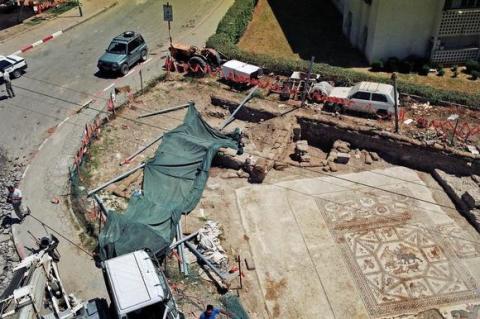
Aerial view of Lod, Israel excavation site, main floor visible at right, in situ. Photo courtesy IAA
Most unique about this traveling display is that the mosaic is being displayed on the floor, as it was originally intended to be seen. Mosaic pavements were an integral part of ancient architecture. With its debut at the Metropolitan Museum of Art in New York, these preserved segments will travel this April 2011 to San Francisco’s Legion of Honor, move on to Chicago’s Field Museum, and end in Columbus, Ohio. Click here for the full Exhibition Schedule.

Lod Mosaic, lower panel of exotic whales, fish and Roman merchant vessels, approx. 13 ft x 5 ft., photo IAA
THE BIG PICTURE
Many mosaics left in situ, are often abandoned to the ravages of time, with little or no protection. Most mosaics “of note” are carefully lifted from their original sites, conserved, and then re-located indoors to enrich the collections of museums of ancient art.
In 2006-2007, the Getty Villa curated Stories in Stone: Conserving the Mosaics of Roman Africa, bringing over 50 major ancient works to the US from Tunisia, displayed as works of art, mainly wall mounted. I had the opportunity to give mosaic workshops and artist demos along with this exhibition, as visitors explored some of the world’s most amazing mosaics right in Los Angeles.
In recent decades, archaeologists and conservators have increasingly recognized the importance of conserving mosaics as whole pavements, in their original architectural surroundings. This attention to display is ground-breaking (pun intended). The Lod Mosaic is one such well-funded conservation effort, done in conjunction with the Israel Antiquities Authority.
The mosaic will be presented in the “theoretical context of an archeological excavation”. This means it will not be hanging on a wall in a museum, but you will be able to see the works as the pavements, and in the orientation of the original excavation site. After the US tour, the Lod mosaic heads back to a brand spanking new “in-situ” crib, known as the Shelby White and Leon Levy Lod Mosaic Archaeological Center, which will open to the public in 2012/13.
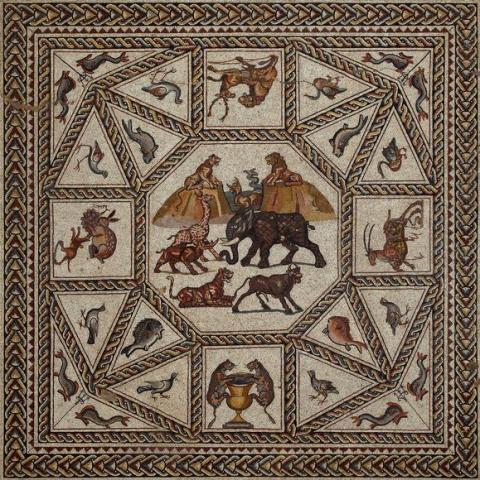
Central panel of Lod mosaic, photo courtesy IAA
HOME SWEET HOME
A major excavation site in Sicily, known as Villa del Casale, is currently undergoing massive renovations to its visitor center. Coverings were constructed over the excavation site in mid-1970’s, and with age and the harsh Mediterranean sunlight, the panels have discolored over time. The armature of the roofing also casts shadows making it difficult to photograph here. There are gangways which give one a bird’s-eye view of the massive and complex mosaics.

Villa Casale: multiple layers of excavation reveal the evolution in decorative pavements, photo by author
Another recent Roman excavation La Villa del Tellaro, in south-eastern Sicily, near Noto, was opened to the public in 2008. Benefiting from the conservation advances, the archeologists have taken great pains to create a visitors center that keeps the mosaic in its original orientation.
DISCOVERIES GALORE
It seems that every day, there are reports of another Roman villa or city being unearthed. This recent momentum has drawn attention to the medium, which is now considered of greater consequence beyond purely aesthetic value. Municipalities see mosaic excavations are an important vehicle for increased cultural tourism and tool for preserving the value of cultural heritage. Returning antiquities to their country of origin is a hotly debated subject.
MORE PRESS
You can follow the back story on The Lod Mosaic project through its own excellent website, http://www.lodmosaic.org/, rich with historical information and conservation news.
Mosaic Art NOW, editor and blogger, Nancie Mills Pipgras has written a very comprehensive article about the mosaic, with lots of links to ancillary websites and videos that have sprouted up around the mosaic, which you can access here.
The Metropolitan Museum has made a very good short video, giving highlights of the excavation.
[youtube=http://www.youtube.com/watch?v=ZSq5Xc29XPA&fs=1&hl=en_US&rel=0]
- So get out there and visit a MOSAIC!!

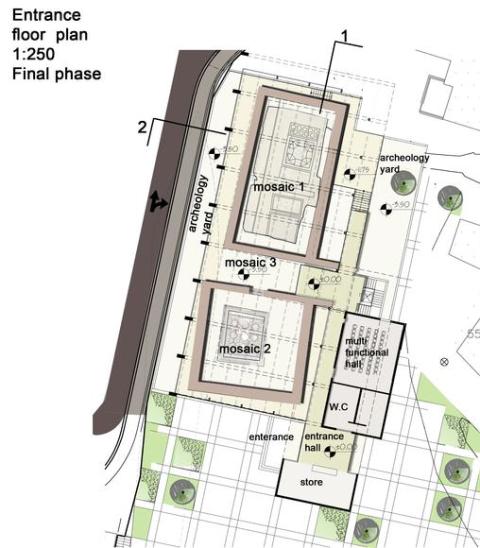


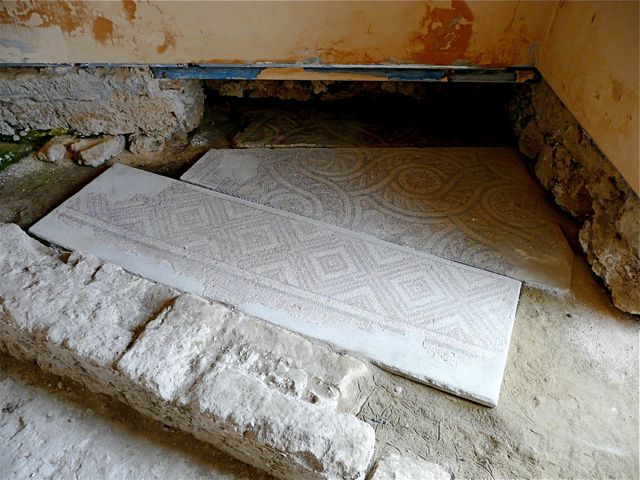

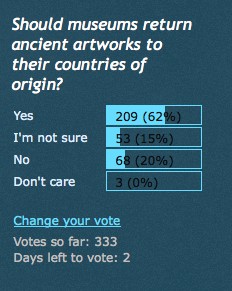
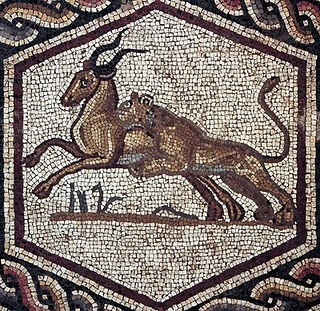

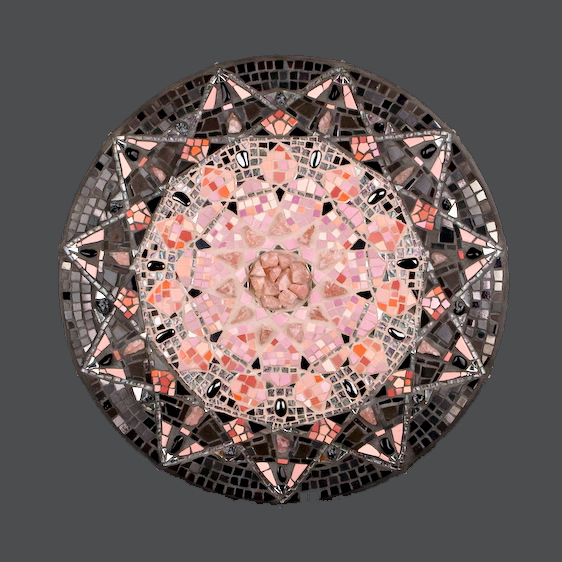
Thanks lillian! I cant wait to see it! it should stay!
Hi yolanda! Yes, we’re lucky here in SF – it will be a great exhibition. Legion of Honor is a beauty of a museum.
Lilian amazing post so thanks for sharing it!
thanks Joe!